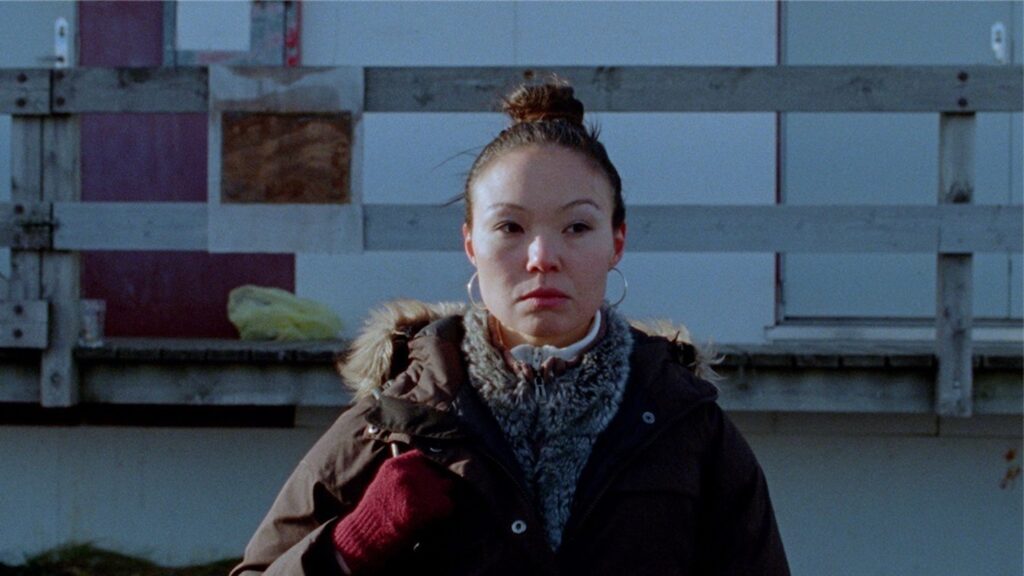Article by Marta Faggi
Translation by Rebecca Lorusso
Kalak’s Greenland is endless. The deep fjord inlets are topped by steep, snow-capped mountain walls. Kulusuk is a small village in East Greenland, made up of a few isolated houses with sloping roofs and bright colors. Jan (Emil Johnsen) takes refuge in Kulusuk with his wife and children, after life in Nuuk has become intolerable. This is not the first time Jan has run away from something: before living in Greenland, he lived in Denmark with his father. He always runs away from himself and his past, in a stressed search for a sense of belonging and community.
This is why the Danish Jan wants to be a “kalak”, a “dirty Greenlander”. The term has other meanings, not always positive, which share a deep sense of anarchy. A “kalak” is someone who is “dirty” and “genuine” at the same time but above all, who can only be recognized as such by other Greenlanders. This recognition will never happen and, therefore, Jan tries to create his own community by actively seeking extramarital relationships, while always informing his wife Laerke (Asta Kamma August) who accepts the betrayals because, in the end, her husband is “everything she has”. Jan’s lovers are numerous but each of these women have one thing in common with the others: they are of Greenlandic origin. The need to please women arises in response to the trauma of the sexual abuse committed by his father when Jan was little more than a teenager, an element that, significantly, represents the first scene of the film. The ghost of his father, now old and ill, constantly hovers around Jan’s life despite the distance, making it difficult for him to establish stable relationships with others. Jan is also an uncaring and often absent father to his children, Amanda (Allie Maggie Kvist) and Markus (Bertram Krassèl). When the little girl is brutally attacked by a dog and has to be moved from Kulusuk to Copenhagen, Jan, haunted by his father’s spirit, does not accompany the injured daughter, and remains alone in Greenland. Here, he ends up in a state of total isolation and resorts to drugs in order to endure the pain. With the precise intent of underlining the repercussions on Jan’s relationship with his father – and following a circular structure – the film ends with a final confrontation between the two men.

The Greenland staged by Isabella Eklöf, and photographed by Nadim Carlsen, is a land where trauma is processed on several levels: the personal level of the protagonist and the social level of the Greenlandic people, who have been the victims of complicated colonialist power dynamics exercised by a hegemonic country, Denmark. These traumas are passed on from generation to generation, establishing relationships in which the boundaries between victim and perpetrator are vague and, often, the same person, anyone like Jan, can occupy both roles depending on who is in front of him. What Eklöf suggests, with Kalak, is that in any case being someone’s victim is never a justification for becoming someone else’s perpetrator.

